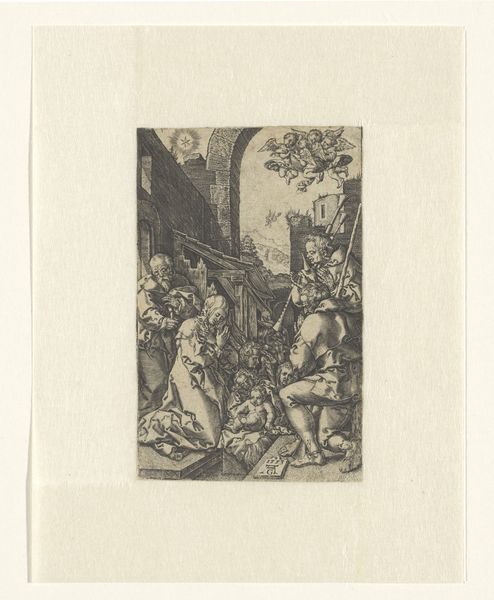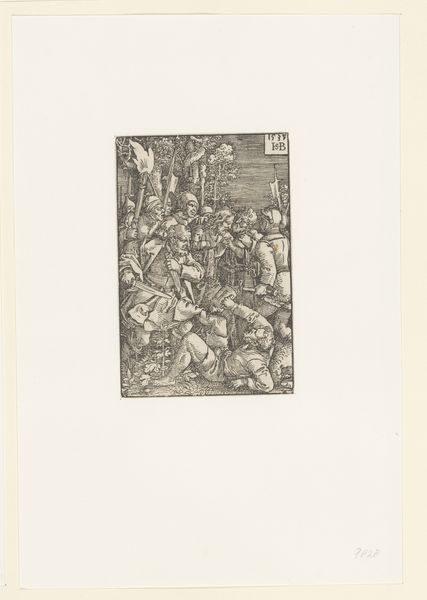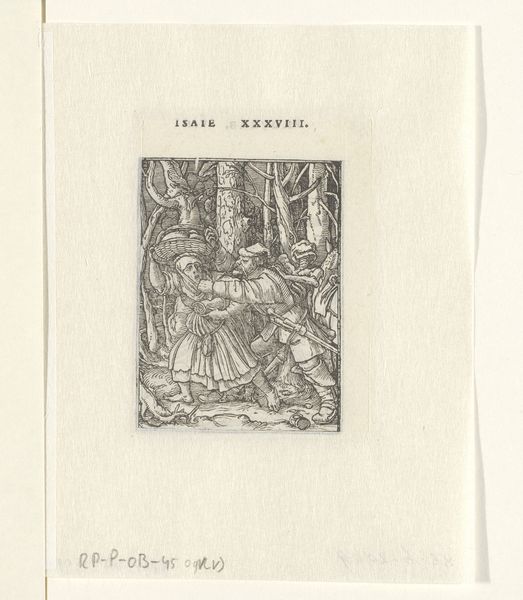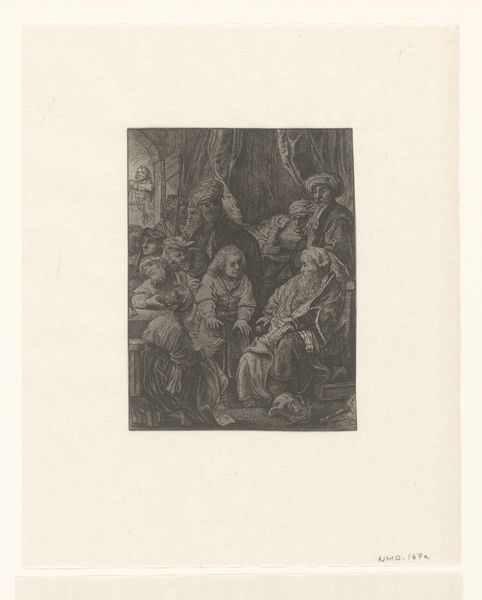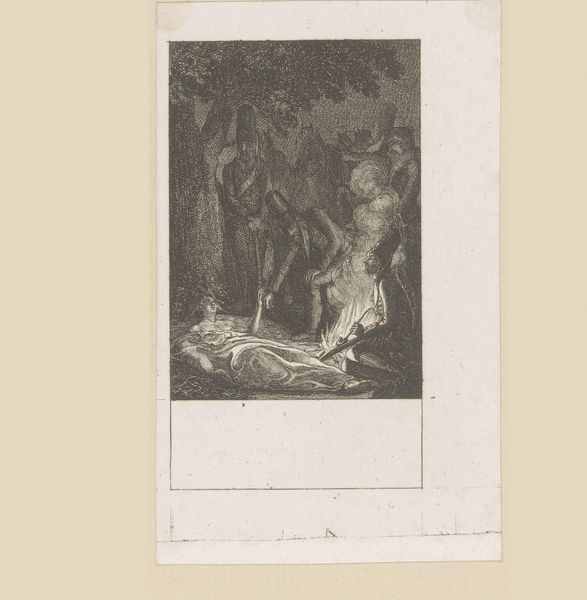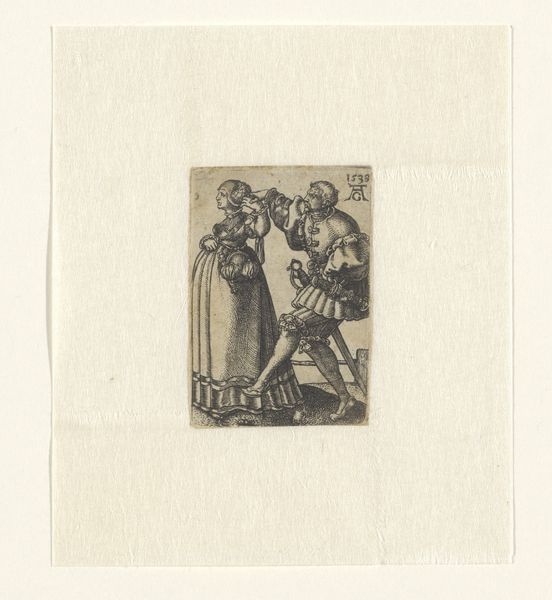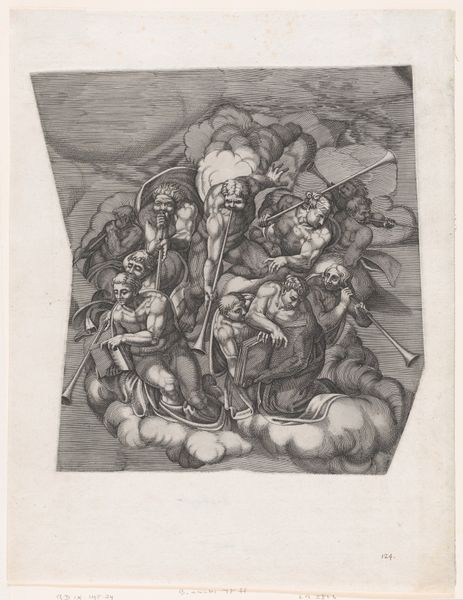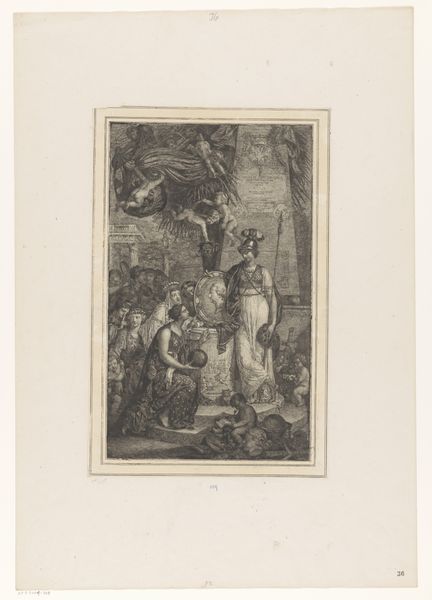
drawing, print, paper, woodcut
#
drawing
#
narrative-art
# print
#
figuration
#
paper
#
woodcut
#
history-painting
#
northern-renaissance
Dimensions: height 115 mm, width 75 mm
Copyright: Rijks Museum: Open Domain
Albrecht Dürer created this engraving of the Entombment, or Graflegging, with iron in the late 15th or early 16th century. The image depicts the emotional scene of Christ's burial. The cross-hatching and detail give the image an emotive tone. It's a small work, but captures a monumental moment from the Gospels, reflecting the religious culture of Dürer's Germany. Consider the social impact of the Reformation during this period. The Catholic Church was losing power and new forms of religious expression were emerging, of which Durer was sympathetic to. Dürer's masterful technique made his prints highly sought after, which allowed for the wide dissemination of religious imagery during a period of intense religious change and debate. To fully understand Dürer's work, we delve into historical sources, religious texts, and the social context of the Northern Renaissance. The meaning of art is always shaped by the world in which it is created and the institutions that support it.
Comments
No comments
Be the first to comment and join the conversation on the ultimate creative platform.

